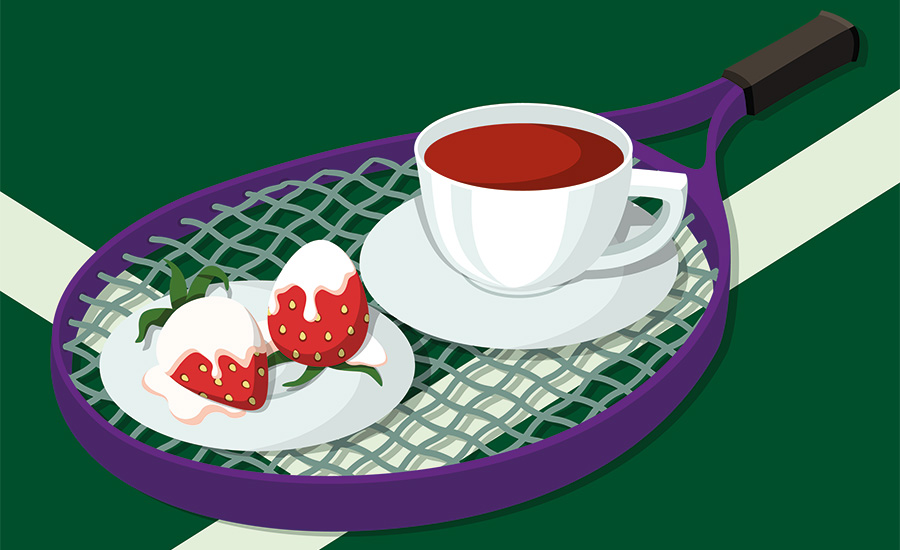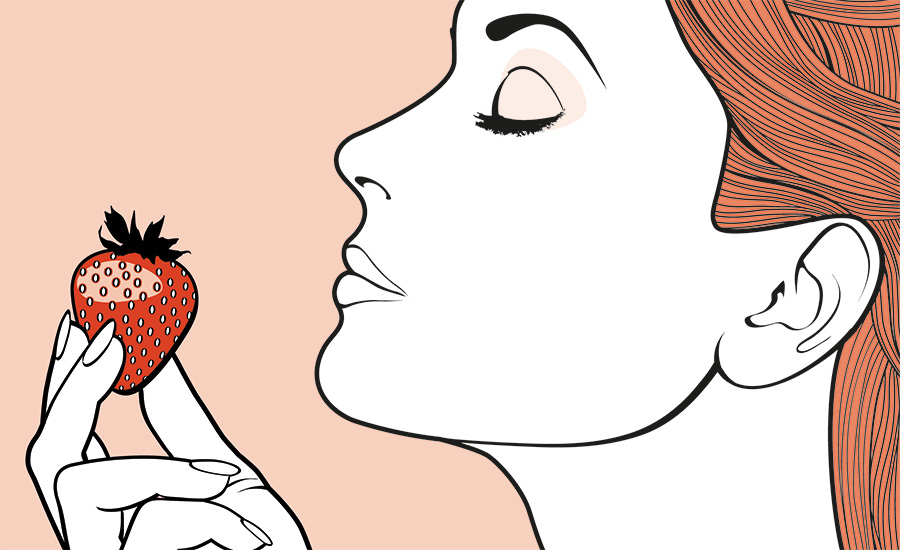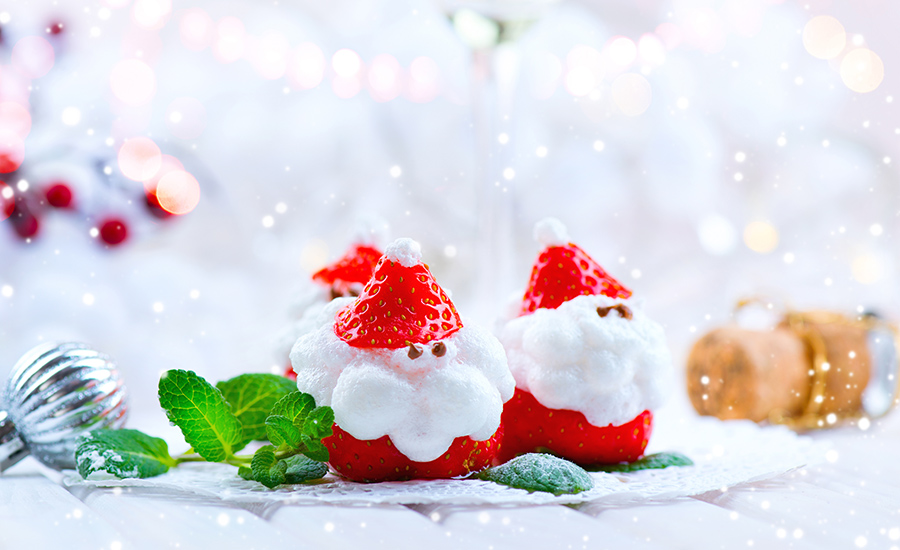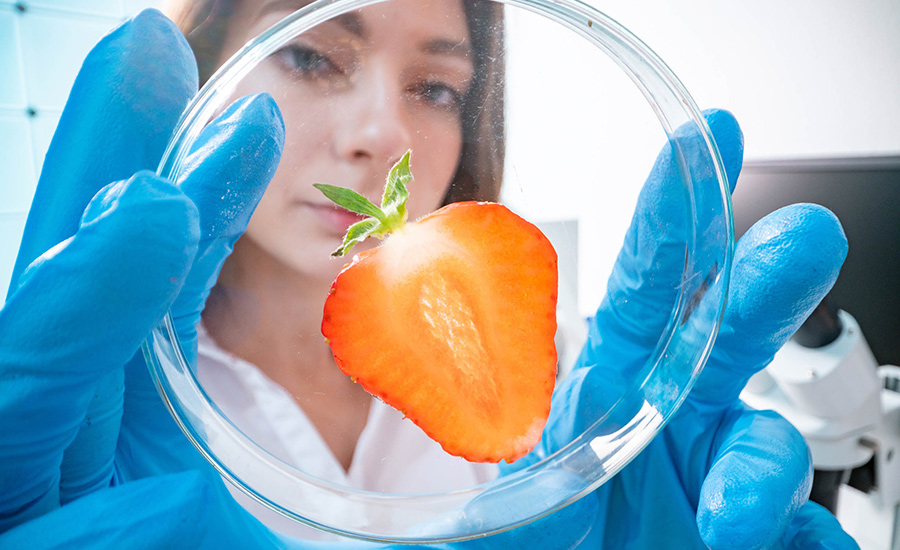Which molecules give strawberries their distinctive smell, how are experts using different types of light to grow them all year round, and just how many of them do we eat? The SCI Horticulture Group told us all about this beloved fruit ahead of their appearance at BBC Gardeners’ World Live in Birmingham from 16-19 June.
Where did strawberries originate?
The woodland strawberry (Fragaria vesca) was first cultivated in the 17th century, but the strawberry you know and love today (Fragaria x ananassa) is actually a hybrid species. It was first bred in Brittany, France, in the 1750s by cross-breeding the North American Fragaria virginiana with the Chilean Fragaria chiloensis.
The strawberry is a member of the rose family, as are many other popular edible fruits such as apples, pears, peaches, and plums. It is the most commonly consumed berry crop worldwide.

People in the UK consume an average 3kg of strawberries every year. Perhaps a certain sporting event has something to do with it…
How many do we eat?
A staggering 9 million tonnes of strawberries are produced globally each year, and their popularity certainly extends to UK shores, and not just during Wimbledon. In the UK alone, the average per capita consumption of strawberries is about 3kg a year!
Domestic strawberry production provides almost all the required fruit for the UK market from March to November; and in 2020, 123,000 tonnes of strawberries were produced within the UK.
This stands in stark contrast to the 50,000 tonnes produced in 1985, when UK strawberries were only produced during June and July. Researchers are currently trying to extend the UK growing season to all year round.

She certainly likes the smell of strawberries, but what gives them that distinctive aroma?
What about the chemistry of their distinctive smell?
The characteristic strawberry aroma consists of many different volatile organic chemicals – more than 360 have been observed in fresh strawberries. Which molecules are present, and in what concentrations, depends on the particular cultivar and how mature or ripe it is.
The most common kinds of chemical are furanones and esters. Esters (such as methyl butanoate) account for more than one third of the observed molecules and 25–90% of the volatiles from any one cultivar.
These molecules are responsible for the fruity and floral notes of the aroma. The most characteristic furanone that gives rise to the characteristic strawberry odour is DMHF.

Pictures like this only increase demand for strawberries out of season.
How to produce strawberries all year...
To optimise strawberry growing conditions, researchers are investigating the influence of temperature, photo-period (response to daily, seasonal, or yearly changes in light and darkness), growth hormones, night-break lighting and CO2 enrichment on flowering and fruiting timing, yield, and quality.
Optimal chilling models are also being developed for both June-bearers and ever-bearers. Critically, a careful and detailed evaluation of the environmental and economic costs of producing winter UK strawberries compared to imports is being undertaken.
Extending the growing season in the UK would have a number of benefits, such as; meeting the increasing demand for out-of-season strawberries while increasing food security, reducing food miles, contributing to public health, providing continued employment, and supporting sustainable farming.
>> Are you a keen gardener? Our resident gardening expert, Geoff Dixon, provides plenty of gardening tips for you on the SCIBlog.
Improving the fruit's nutrient profile
The nutrient content of strawberries is dependent in part on the plant’s growing conditions. The interaction between light intensity and root-zone water deficit stress is being examined to improve berry nutrient content. Researchers are also investigating how to apply this to commercial strawberry production in total environment-controlled agriculture systems.
See how a college in Finland is harnessing LEDs to power a vertical strawberry farm!
LED light colour and strawberry growth
Light emitting diode (LED) lighting increases yields in out-of-season strawberry production. LEDs have a higher energy efficiency than traditional horticultural lighting and come in a range of single colours with varying efficiencies and effects on plant growth.
Red LEDs convert energy into light (and drive photosynthesis) most efficiently, followed by blue, green, and far-red, respectively. However, red light alone is not sufficient for optimum plant growth. Blue light controls flowering, promotes stomatal opening (pores found in various parts of the plant), inhibits stem elongation, and increases secondary metabolites (organic compounds produced by the plant), thereby improving flavour.
Additional green LEDs, which appear white, improve visibility for workers. These lights can also penetrate deeper into the plant canopy, improving photosynthesis. Far-red light produces shade avoidance responses such as canopy expansion and earlier flowering, which can be beneficial for increased light capture and earlier fruiting.
 >
>Confirmed strawberry.
Who is carrying out strawberry research in the UK?
The Soft Fruit Technology Group at the University of Reading is just one of the institutions providing research to support the UK strawberry industry. The main areas of research are plant propagation, crop management, and production systems.
Find us at BBC Gardeners’ World Live
From 16-19 June, the SCI Horticulture Group will tell the public all about the hidden chemistry behind their favourite fruit and vegetable plants at the National Exhibition Centre in Birmingham for BBC Gardeners’ World Live. If you’re curious to learn all about strawberries, chillis, and chard, pop by and say hello!
>> Written by The SCI Horticulture Group. Special thanks to Neal Price from Chillibobs, Martin Peacock of ZimmerPeacock, Hydroveg, and The University of Reading Soft Fruit Technology Group for supporting the work of the SCI Horticulture Committee at BBC Gardeners’ World Live.











